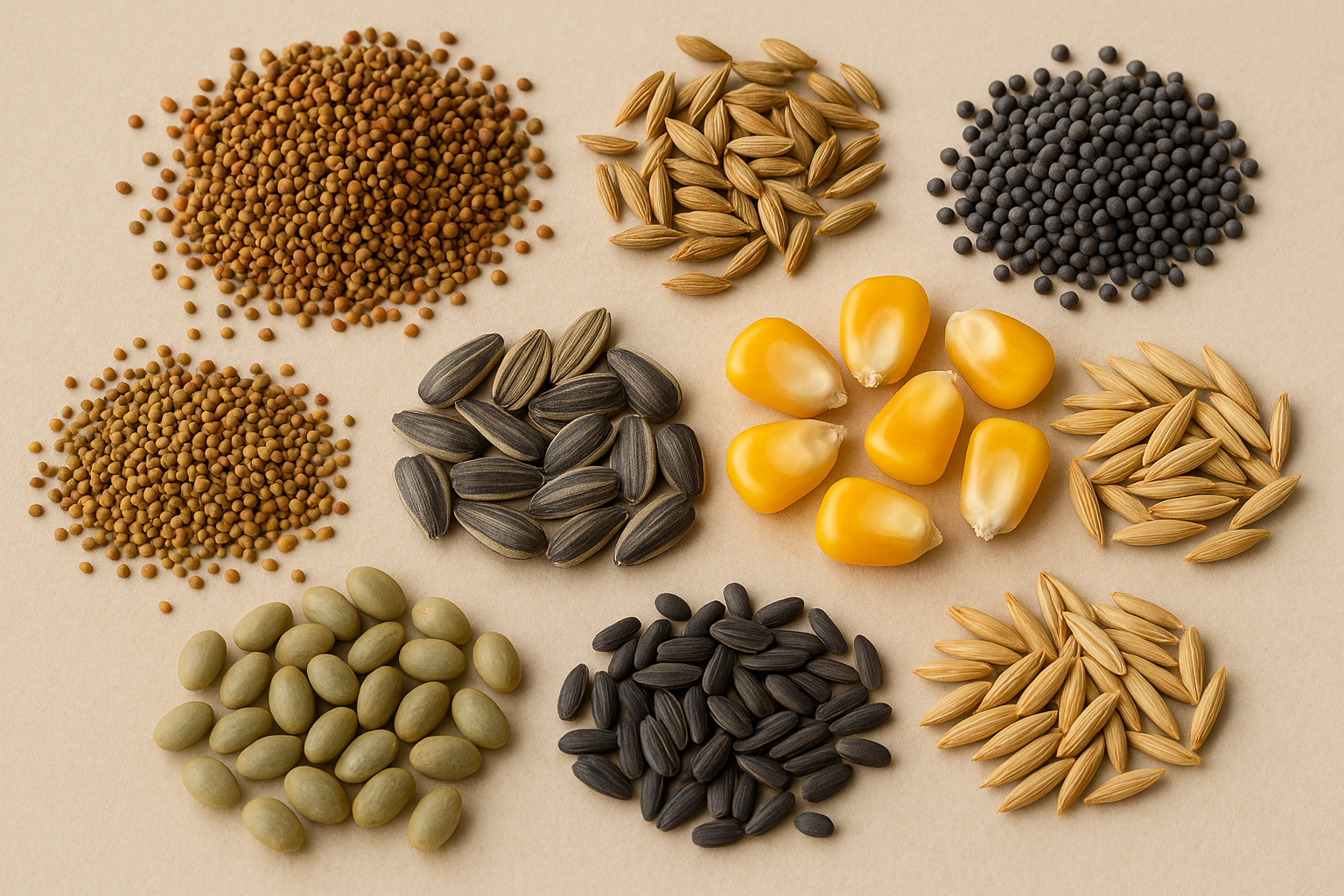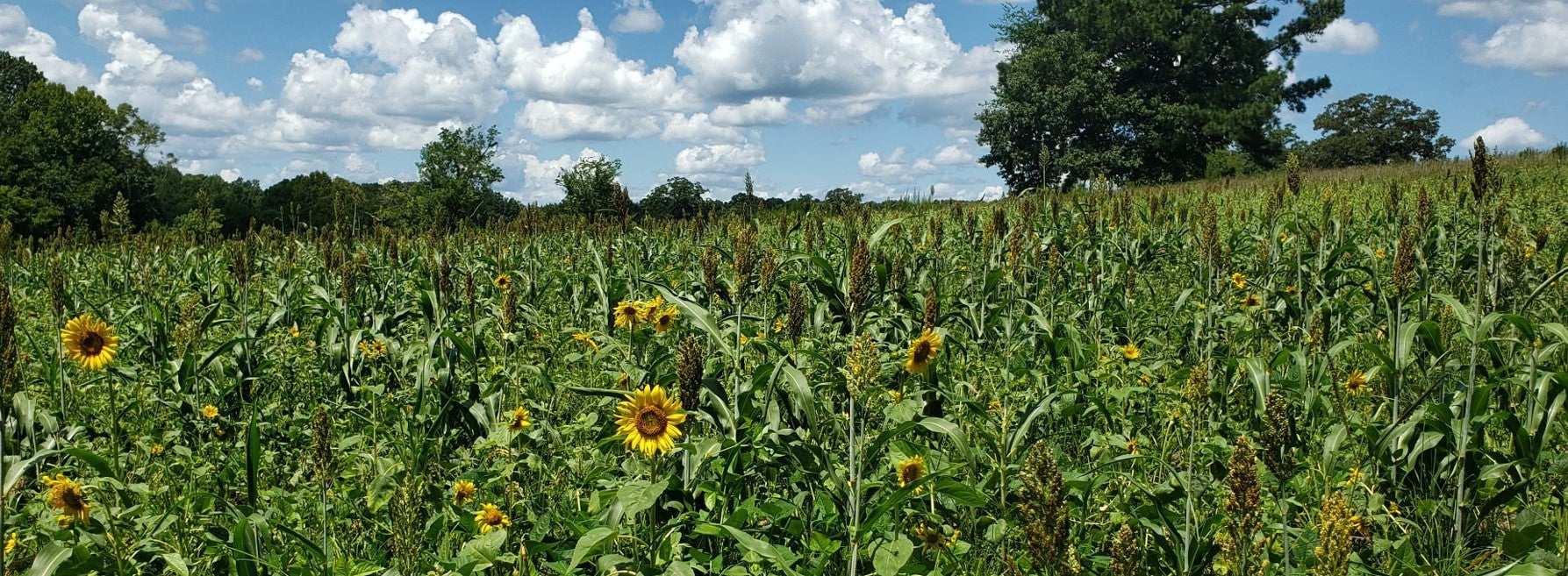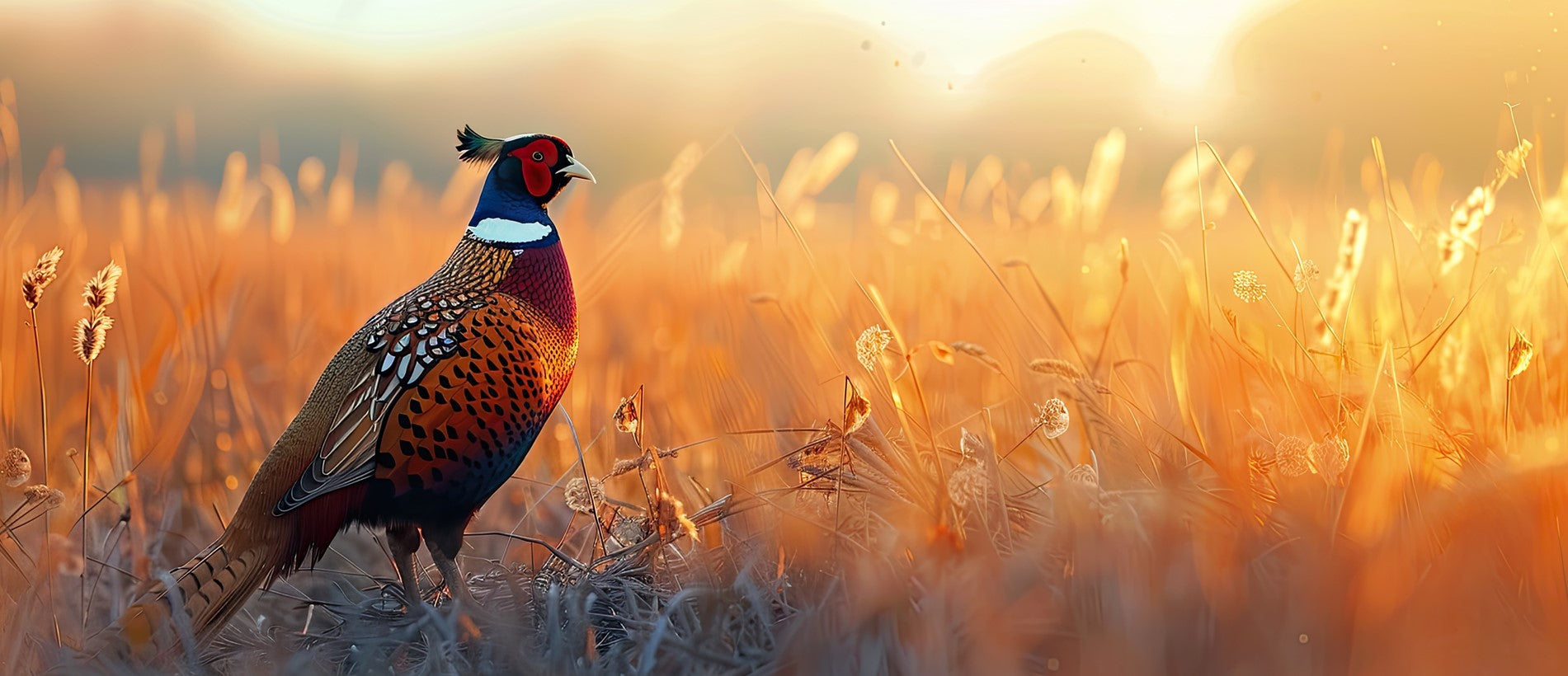BUCK HARVEST RESTRAINT IN THE MIDWEST: 10 YEARS LATER
This story actually begins back in 1988. That was the year I first became aware of the Quality Deer Management Association (QDMA). I immediately joined, no doubt becoming one of the first members of the organization from the state of Iowa.
My membership in the QDMA was eye opening in many ways, but especially with respect to the phrase… “let him go so he can grow.” Growing up in Iowa the concept of passing up shot opportunities at young bucks in order to manage for an older buck age structure was as foreign to us as the planet Jupiter was distant. We had always tried to kill the first buck that came within range as soon as it stepped in range! We had little idea that the vast majority of the bucks that we saw and harvested were only yearlings. Or that if we simply restrained from harvesting these young bucks, they had the chance to grow into monsters.
Iowa is part of the agricultural Midwest where many deer biologists believe the potential for QDM is highest. Corn, soybeans, alfalfa, and clover are available across a large percentage of the landscape. These planted crops make up the majority of the deer’s diet on a year-round basis. Thanks to this unsurpassed nutrition, many believe that the only ingredient lacking is an older buck age structure. Unfortunately, Iowans as a whole are not very selective with regard to their buck harvest. The Iowa DNR estimates that around 20 to 25 percent of all bucks killed in the state are only fawns, 35 to 60 percent are yearling bucks, 20 to 25 percent of bucks are 2-1/2 to 4-1/2 years old, and only 1 to 3 percent of harvested bucks are 5-1/2 years old or older.
Thanks to the QDMA we began to take to heart the concept of passing up young bucks. Then, during graduate school, I had the privilege to work on a large, private ranch in southern Texas that had been trophy managed for many years. The buck age structure on this ranch was eye opening to say the least, with 40 percent of bucks sighted during the pre-season helicopter survey estimated to be fully mature! The wheels in my brain soon started turning, as I wondered what a deer herd in Iowa would look like if 40 percent of the bucks were 5-1/2 years old or older – no doubt the whitetail version of Jurassic Park! Later, in 1996, we leased the hunting rights to a large tract in southern Iowa where we immediately implemented very strict buck harvest criteria in an effort to imitate the deer management and buck harvest restraint commonplace in southern Texas.
The Starting Point
The core area of our new Iowa lease already had a history of relatively light and selective buck harvest, so we were already one step ahead. That first hunting season in 1996 we did not harvest any bucks in an effort to allow all bucks to gain another year in age.
Our first trail camera survey one year later indicated a minimum of 32 different bucks. From the photos I estimated that 17 were yearlings, eight were 2-1/2 years old, six were 3-1/2 years old, and one was mature (5-1/2+ years old). The above numbers resulted in a buck age structure skewed toward young bucks with 53 percent estimated to be yearlings, 25 percent estimated to be 2-1/2 years old, 19 percent estimated to be 3-1/2 years old, and only 3 percent estimated to be 4-1/2 years old or older. Because the camera survey only identified one buck within the mature age category that we chose to target for harvest, we again restrained from harvesting any bucks during the 1997 hunting season.
Early Success
Our 1998 trail camera survey indicated a minimum of 48 different bucks now spent at least part of their time on our leased property. Based on my age estimates from the photos, 27 of these bucks were yearlings (56 percent), seven were 2-1/2 years old (15 percent), seven were 3-1/2 years old (15 percent), five were 4-1/2 years old (10 percent), and two were 5-1/2 years old or older (4 percent). The 1998 hunting season marked a turning point for our lease when my brother Jason harvested the lease’s first buck, a 4-1/2-year-old, 145-inch, nine-pointer.
The following year our 1999 trail camera survey indicated at least 57 different bucks inhabited our lease. Of these, I estimated 28 were yearlings (49 percent), 13 were 2-1/2 years old (23 percent), seven were 3-1/2 years old (12 percent), four were 4-1/2 years old (7 percent) and five were 5-1/2 years old or older (9 percent). In only three years the number of photographed bucks estimated to be mature increased five-fold from only one (3 percent) in 1997 to five (9 percent) in 1999! Even more amazing, the number of bucks estimated to be 4-1/2 years old or older increased nine-fold, from only one (3 percent) to nine (16 percent). During the 1999 hunting season lease members killed two bucks, a gray-haired 7-1/2-year-old buck that gross-scored 169 inches and a very respectable 5-1/2-year-old buck that gross-scored 178 inches. A third buck, which had been missed by a couple of lease members earlier in the season, was harvested by a neighbor. This monster buck gross-scored 203 inches and netted around 173 inches as a typical!
Our 2000 trail camera survey indicated yet another jump in the buck age structure had occurred when we photographed 63 different bucks, of which I estimated that six (10 percent) were fully mature! That year we decided to hunt Iowa’s late muzzleloader season during early January instead of the early December shotgun season we had traditionally hunted. Unfortunately, this later proved to be a mistake when Iowa received a record amount of snowfall during the month of December! Despite having a record number of mature bucks on the property, we failed to harvest a single buck that hunting season. The deep snow, unusually cold temperatures, and our inexperience with muzzleloaders all contributed to send us home empty handed.
Fast Forward To 2006
After 10 years of QDM involving a very conservative buck harvest, what does our buck age structure look like now? Have we succeeded in approaching the amazingly old buck age structures common to large ranches in southern Texas? Based on our most recent trail camera survey, I identified 182 different bucks (property size increased 170 percent from 1,480 acres to around 4,000 acres), of which I estimated 83 were yearlings (46 percent), 48 were 2-1/2 years old (26 percent), 26 were 3-1/2 years old (14 percent), and 15 were 4-1/2 years old (8 percent). However, only 10 bucks (6 percent) were estimated to be 5-1/2 years old or older.
Our annual buck harvest has increased during recent years as our property size has increased, averaging 4.4 bucks per season during the past five years versus an average of only one buck per season during the first five years of our lease. However, our annual harvest has never exceeded six bucks in any one year.
Buck Age Structure Reaches Plateau
Surprisingly, although we continued to harvest very few bucks each year, our buck age structure did not continue to increase. Instead, the buck age structure peaked during the 2000 season when I estimated 10 percent of bucks were mature. The percentage of mature bucks then decreased during the 2001 season to around 5 percent despite no buck harvest during the 2000 season. And, the percentage of bucks estimated to be mature has since remained relatively unchanged during the years that followed even though our harvest restraint continued and the buck density (on a per acre basis) increased.
Why did the percentage of mature bucks plateau at only around five percent? The following are a couple of theories to explain the lack of continued increase in the buck age structure…
1. Not enough acres? Hunting pressure on neighboring properties may be sufficiently severe to limit buck survival on our leased properties. Our low-fenced leased properties in southern Iowa total around 4,000 irregularly-shaped acres and are surrounded by farms that average only 300 acres in size. The ranch I referred to above in southern Texas is 40,000 acres and is surrounded by similar-sized ranches with similarly low hunter density.
Recent telemetry research indicates that a minimum of around 11,000 acres are needed to insure that at least half of the middle-aged and older bucks on a property are not subjected to harvest on a neighbor’s property. Obviously, our properties total much less than this amount. Therefore, a high percentage of the middle-aged bucks that we elect not to harvest remain vulnerable to harvest by our neighbors.
2. Is non-hunting-related buck mortality higher in the agricultural Midwest than southern Texas? Prior to recent research in southern Texas, most deer biologists would have believed the opposite was true. However, a study by Stephen Webb and others involving radio-collared bucks indicated that average annual buck survival was over 80 percent with more than 50 percent of yearling bucks surviving to 6-1/2 years of age! It is doubtful survival of Midwestern bucks outside of the hunting season is as high as this. In addition, there is some indication that brain abscesses may be a significant contributing factor toward reduced buck survival in the Midwest (see Kip Adams’ article in the issue of Quality Whitetails).
3. Is home range size of mature bucks in the agricultural Midwest larger than home range size in southern Texas? Recent research in southern Texas indicates that average home range size of bucks 5-1/2 years old and older is only around 450-550 acres. Nearly 100 percent of the landscape in southern Texas is brush-covered deer habitat. By contrast, habitat in the Midwest is much less contiguous and in fact, is highly fragmented due to farming practices. Therefore, it is likely that mature bucks in the Midwest travel over larger areas and are therefore more susceptible to harvest by neighbors. Unfortunately, no telemetry research has yet been completed on mature-aged bucks in the Midwest to know their average home range size.
4. Are differences in fawn recruitment responsible? On our Iowa properties, annual fawn recruitment rates have averaged an amazingly high 103 percent (1.03 fawns per doe) and have varied from a low of 73 percent to a high of 158 percent. By contrast, annual fawn recruitment on open range in southern Texas averages only 35 percent and varies from lows of less than five percent to highs of around 60 or 70 percent. In southern Texas, a fawn crop failure occurs once every three to four years. Guess what happens to the buck age structure one year following a poor fawn crop? It jumps dramatically because all of a sudden there are very few yearling bucks entering the population! The Midwest’s buck age structure is young partially because annual fawn recruitment rates are consistently high, resulting in a large influx of young bucks every year.
5. Are my age estimates of photographed bucks inaccurate or biased and are actual buck ages older? As you may have read in the last issue of Quality Whitetails, we have been able to quantify my age estimates by later harvesting some of these same bucks. Cementum annuli age estimates of these bucks from Matson’s Laboratory has indicated the opposite is true – I have a slight tendency to overage Iowa bucks on the hoof.
Does This Mean That We Should Stop Trying To Raise Older-Aged Bucks In The Midwest?
Absolutely not! However, I now believe that a buck age structure similar to what occurs on better-managed properties in southern Texas is an unrealistic management goal nearly anywhere else within the whitetail’s range. The ingredients necessary for as many as 40 percent of bucks to be fully mature are not attainable unless you have acreages similar to south Texas with similarly low hunter densities (typically only one hunter per 1,000 acres).
Although our buck age structure has never surpassed 10 percent of the bucks estimated to be mature, our harvest of mature bucks has more than quadrupled. In fact, the average buck harvested on our lease gross-scores nearly 162 inches. In addition, six of the bucks killed during the past four hunting seasons qualify for the prestigious Boone and Crockett (B&C) records program. I don’t know of a single low-fenced property in all of southern Texas that has harvested an average of one B&C-caliber buck per 2,650 acres over four successive hunting seasons.
Although southern Texas may “trump” the rest of the whitetail’s range with regard to buck age structure and sheer numbers of mature bucks, the agricultural Midwest easily grows the highest density of B&C-caliber bucks anywhere in North America. In this regard, no where else in the world are your efforts at harvest restraint more rewarded than in the Midwest.
Posted by Dr. Mickey W. Hellickson











Leave a comment